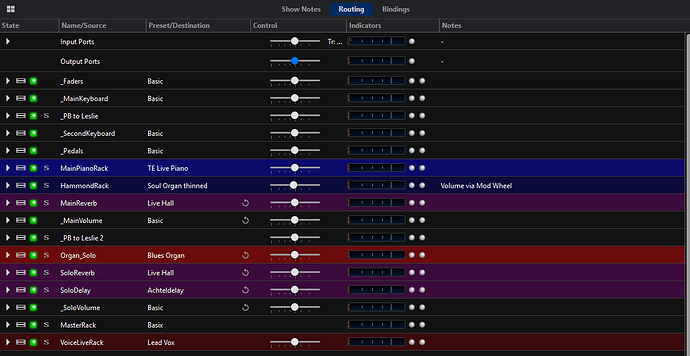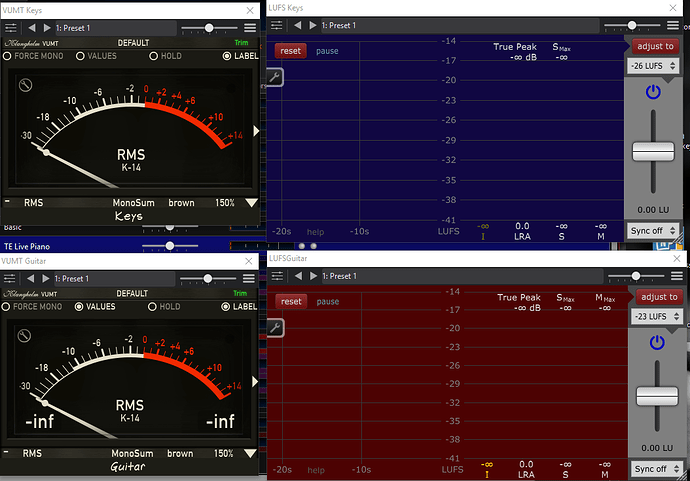If you simply want to adjust the overall volume of all plugins within a song, and if your songs are built simply without any adjustment layers in between different instrument groups, you can use “Output Ports” to raise or lower the volume of everything.
My songs are usually a bit more complicated: see here; this is a typical song in my setups:
- the top five slots are just my way to organize input routing
- then there are four slots to create the sound I play on my main keyboard, in this case a piano sound with a hammond layer underneath, plus some reverb for this layer, overall controlled by the “_Main Volume” rack
- next, we have the hammond solo sound, with a utility that converts pitch bend to modulation, so I can use my pitch wheel as a leslie switch, then the organ sound plus separate delay and reverb. All this controlled by a separate volume rack
- finally, my master rack contains some compression and another layer of volume control - this time NOT controlled by the song, so I can raise or lower volume levels persistently across songs. After this, there is just a separate rack to switch presets on my VoiceLive
If I simply used the Output Ports fader to control volumes, this would just adjust EVERYTHING, but, like you are doing in the screen shot you shared, I first use the rack output gain faders to create a mix between the used racks - set the piano a bit louder or give the solo organ some more kick.
I have FreeG in all of my racks as a final volume control (usually renamed to “Volume”)
Its gain parameter is bound to CC7 in the rack bindings, so by sending CC7 to this rack, I can dynamically control the specific rack volume (fade in, fade out), as opposed to the “static” mix I create by using the rack output gain. So I set the target level of the rack using output gain, but I may use the modwheel or expression pedal to dynamically adjust the volume of the hammond layer underneath the piano from 0 to the pre-set level.
Also, there is a FreeG in each of the volume setting stages (_Main Volume, _Solo Volume and Master Rack), again bound to CC7. So, by routing faders or other controllers to each of these racks, I can dynamically control levels at instrument, layer and total song level during the performance.
Why do I use FreeG instead of simply automating the “Output Ports” slider of the rack via CC7? I simply like the response curve of FreeG - it hits 0dB at a CC value of 64 and provides a boost of up to +18 dB from 64 to 127, which just feels good to me. Plus, it provides a first layer of VU metering at the rack level when I am tuning my volumes.
But I could as well use the Output Ports slider within the rack to create my dynamic volume control; this is just how I started building my racks, and it works nicely, so I haven’t seen the need to change my ways…
Cheers,
Torsten




 .
.